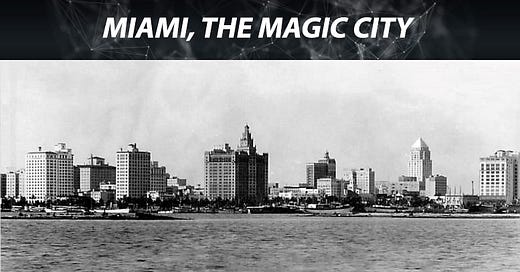Origin of Miami's Nickname
The City of Miami, Florida, has been referred to as the 'Magic City' since its inception. Here is the story on how the city got it's nickname.
The moniker has become ubiquitous with the city that celebrates eternal summer. While it conjures a poetic and optimistic view of the metropolis it describes, it also infers that the municipality possesses a mystical aura. Given the rugged environs of the mangrove and hardwood hammock on which the city was built, it may have required a little magic to create enough of an opening to construct a small township, much less what would become a major US city. However, the challenges of constructing the city did not factor into the municipality’s nickname.
Miami has experienced many renaissances over the course of its relatively short history. Founded in 1896, it has become the destination of new beginnings for those who want, or in some cases need, a fresh start. Prior to ever visiting South Florida, Al Capone once famously referred to Miami as “the garden of America, the sunny Italy of the new world, where life is good and abundant.” It was not uncommon for Magic City to capture the hearts and imagination of people long before they spent any time in the area. It is this spirit that inspired the magical tagline forever associated with the city by Biscayne Bay.
Keep reading with a 7-day free trial
Subscribe to Miami History to keep reading this post and get 7 days of free access to the full post archives.





